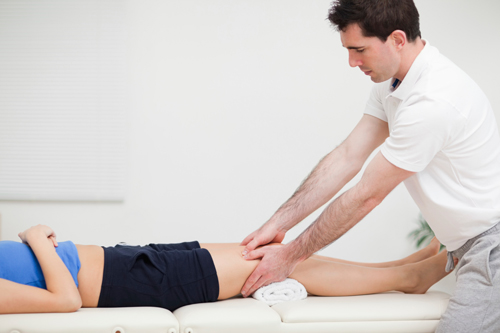
Tibial osteotomy is a surgical procedure that realigns the angle of the lower leg and changes the distribution of pressure within the knee. Physicians most often recommend the surgery for people 40 to 60 years of age who have osteoarthritis on only one side of the knee. In the knee, the femur (thighbone) of the upper leg meets the tibia (shinbone) of the lower leg. Cartilage covering these bones allows them to slide smoothly when the knee is moved. In some people, unequal tibial alignment means that additional pressure is exerted on either the inner (medial) or outer (lateral) compartment of the knee. As a result, cartilage in the area of greater pressure wears away faster, leading to pain and reduced joint function.
The type of tibial osteotomy performed depends on which side of the knee is damaged.
- In a closing wedge osteotomy, the surgeon removes a wedge of bone from the lateral side of the tibia and pins the cut sides of the tibia together.
- In an opening wedge osteotomy, the surgeon cuts a wedge out of the medial side of the tibia and grafts bone from the pelvis to push the cut edges of the tibia apart.
With surgical adjustment of the tibia, pressure is shifted to the area of the knee where cartilage is still intact. This prolongs the life of the joint and delays the need for total knee replacement. Successful recovery from tibial osteotomy requires long-term physical therapy to achieve a normal gait and regain strength and joint flexibility. A 2011 study conducted at the University of Western Ontario suggests that strength training begun 12 weeks before surgery can result in improved knee-related quality of life, less pain and a greater ability to participate in sports after surgery. If you are considering tibial osteotomy, are physically active and want to return to sports after surgery, we can work with you and your surgeon to design an exercise program that increases the knee’s range of motion, prevents muscle loss, rebuilds muscle strength and prevents stiff ness. With our assistance, you may return to your previous level of activity with less pain and better mobility than you had before surgery.
